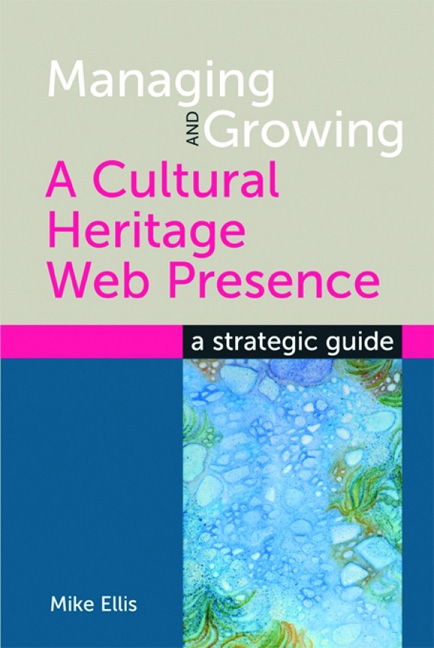Book contents
- Frontmatter
- Dedication
- Contents
- Acknowledgements
- Glossary
- Introduction
- 1 Evaluating what you have now
- 2 Building a strategic approach
- 3 Content
- 4 Marketing
- 5 Policies and guidelines
- 6 Traffic and metrics
- 7 The social web (Web 2.0)
- 8 The website project process
- 9 Away from the browser
- 10 Bringing it all together
- Bibliography
- Index
- Frontmatter
- Dedication
- Contents
- Acknowledgements
- Glossary
- Introduction
- 1 Evaluating what you have now
- 2 Building a strategic approach
- 3 Content
- 4 Marketing
- 5 Policies and guidelines
- 6 Traffic and metrics
- 7 The social web (Web 2.0)
- 8 The website project process
- 9 Away from the browser
- 10 Bringing it all together
- Bibliography
- Index
Summary
Introduction
Say you went out today, bought some web hosting and a domain name (website address). If you worked hard, you could easily get something on the web in a matter of days, possibly hours. In this time, you might have successfully adhered to all the required standards, done some design, written your copy, paid for the means to update it – maybe a WCMS or other technical system – and gone live. If you did this and nothing more, you'd have – technically at least – built a website. But you are still a long, long way from establishing a successful ‘presence'.
In this particular – rather extreme – instance, your site would receive no or almost no traffic. The analogy in Chapter 1 ‘Evaluating what you have now' of building a shop down a lonely street which never has any passing trade is hackneyed but nonetheless accurate. However beautiful, however well designed, however well thought out, however well staffed – your shop won't get anyone coming in to it unless people know about it, see the value in it, and are prepared to cross the threshold.
In this chapter we'll look more closely at how you can get people to come to your site, either through direct marketing or by focusing your SEO (Search Engine Optimization) strategy so that people find your site when they search for content contained within it.
From ‘site' to ‘presence'
Many people understand now that building a website is only the beginning of a much longer (and actually, much harder) process of encouraging people to visit that website; however, there are still endless projects going on all the time from cultural heritage organizations and others where all the effort and budget is in that first, initial ‘build' effort, and very little is left over to do the important bit which follows: the marketing and traffic driving.
Although the example I've used is deliberately extreme, and it is unlikely that many people would launch a new website and then not tell anyone at all about it, the transition from siteto presenceis one which many institutions struggle with. This is partly perhaps because the web has changed things so radically in such a short space of time, but partly it is also because the word ‘marketing' often has negative connotations within cultural heritage organizations.
- Type
- Chapter
- Information
- Managing and Growing a Cultural Heritage Web PresenceA strategic guide, pp. 63 - 82Publisher: FacetPrint publication year: 2011
- 4
- Cited by



